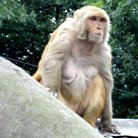After our meeting, Dr. Sedhain informed us that he would be traveling to Sanfe today on his way to
As we passed by riverside Chettri hamlets and cliffside cornfields, he showed us the land to which he was so dedicated. An amateur movie-maker, he would stop at lengths to shoot some footage of a humming woman washing clothes and early-rising children making their way up the mountain to go to school. Everywhere he passed, residents would go out of their way to say a salutation to him. It was clear that Dr. Sedhain is very well-liked by his community.
“Life is hard in Achham,” he said, while watching a woman old enough to be my grandmother carry a bundle of firewood twice her size down the mountain. His eyes grew sad as he watched her hunched form totter down the rocks.
Part of the problem was the lack of roads and the difficulty of travel. Due to the difficulty of getting from villages to clinics, more than 80% of births in the region are performed at home, often without the aid of a midwife.
“This is why PMTCT (Prevention of HIV from Mother to Child) training needs to be deprofessionalized.” Sedhain notes. “What use is it to have a few highly-trained PMCT doctors if the nearest birthing clinic is hours away? Nobody will go.”
As such, Dr. Sedhain often brings the hospital to the people. Every few months, he holds health camps at the most remote villages. Hearing that the DHO was passing through, local authorities even came out to our travel party to ask Sedhain to see some patients. With Dr. Bishnu, Dr. Sedhain observed a gaunt man, his eyes yellow and his tongue extremely swollen. “It may be TB… Maybe even AIDS.” Even as we were eating, an elderly shopkeeper came to beg the doctors to see his wife. She had had a series of epileptic seizures this month that had never before occurred.
Despite the promise we saw in some these places, Dr. Sedhain noted, however, that custom and history was holding the region back.
“Achham almost exclusively practices Chaupati Goth.” He said. “Nobody knows why, but 90% of the families here do.”
Chaupati is the practice of forcing a menstruating woman to sleep in a cowshed. Unfortunately, even the cowshed is too glamorous. The actual structure the woman sleeps in is a 3.5ft by 3.5ft by 3.5ft hutch reserved for this occasion.
“The people believe that if the women are not separated, fire will burn down their homes or tigers will eat their livestock.”
“These are the types of problems we must deal with,” he noted. “There are many problems in Achham,” he mused. “They are not big problems, but they are complicated problems.”
